(412) 586-4678

(412) 586-4678
MEDICATION: This compounded prescription contains pharmaceutical grade, bio-identical DHEA derived from yam plants that is identical to what your body produces.
Dr. Norman Orenreich was the first researcher to prove that DHEA levels drop steadily as we age, suggesting that DHEA may be a “biomarker” or measure, of the aging process itself. Levels peak at age 25-30. Young people produce about 12-15mg of DHEA per day and that amount decreases by about 2mg per day for every decade after the age of 30. This is one of the reasons that young people eat more without getting fat, and tolerate cold weather better: DHEA, like the thyroid hormone, increases heat production and ability to burn calories. We start feeling the effects of decreased DHEA levels by our forties. The brain contains a higher concentration of DHEA than the blood does and much of the DHEA is formed in the brain (from Pregnenolone), but it is probably produced in other organs, including the skin.
USE: DHEA is known as the “anti-stress” hormone and protects brain cells from cortisol (stress hormone). Remember that stress decreases the body’s production of DHEA and increases the body’s consumption of DHEA. DHEA converts to or stimulates the production of estrogens, testosterone, cortisone, and many other steroid hormones as the body needs them.
DHEA’s uses are numerous and include: Energizer, enhancement of libido, restoration of memory, rejuvenation of the immune system, stress reducer, Osteoporosis prevention, cancer fighter, body fat reducer, therapy for menopause, fine wrinkle eraser, dry eye reliever, burn healer, cardioprotection, and new hope for lupus sufferers. (All of these effects have been demonstrated in studies). Results are individual and may be subtle and cumulative rather than direct and immediate.
Diabetes can be produced experimentally by certain poisons, which kill the insulin-producing cells in the pancreas. Rabbits were experimentally made diabetic, and when treated with DHEA their diabetes was cured. It was found that the insulin-producing cells had regenerated. Many people with diabetes have use brewer’s yeast and DHEA to improve their sugar metabolism. In diabetes, very little sugar enters the cells, so fatigue is a problem. DHEA stimulates cells to absorb sugar and to burn it, so it increases our general energy level and helps to prevent obesity.
Levels of DHEA production in the body vary according to stress, fever, sudden low blood sugar, and disease states. DHEA levels are lower among smokers than among nonsmokers, and lower among heavy drinkers than among non-drinkers. Birth control pills and other synthetic hormones also deplete DHEA.
DOSAGE/ADMINISTRATION
NOTE: If taking ORAL DHEA also take: Melatonin 500mcg-10mg nightly, Vit E Succinate 400-800IU daily, Vit C and Selenium, I3C 200mg twice a day, Vit D3 1000-4000IU a day, Gamma Tocopherol 210mg per day
NOTE: Make sure your Thyroid (Free T3, Free T4, and TSH and TPO) and Progesterone levels are adequate to prevent the DHEA from turning into Estrogen. We can test your hormones via saliva, ask us how!
Some women have a natural excess of DHEA. They tend to have more hair, oilier skin, and a greater incidence of acne. These and other symptoms can also develop from taking more DHEA than your body will tolerate. Edginess and irritability are also signs of excess. Supplementing with too much DHEA for a prolonged period of time can generate facial hair and loss of head hair. This is a result of some of the DHEA converting to testosterone. Signs of excess are commonly seen among women with polycystic ovarian syndrome, an inborn hormonal defect that causes overproduction of DHEA and testosterone.
CONTRAINDICATIONS/WARNINGS AND PRECAUTIONS
SIDE EFFECTS
Occasional side effects (seldom experienced except at higher therapeutic dosages) can include acne, unwanted hair growth, chest tightness, heart palpitations, sleeplessness, irritability, and fatigue. If these are experienced, this is a sign of excessive dosing and dose should be reduced. Side effects subside within 24 hours.
References:
Schmidt PJ, Daly RC, Bloch M, et al (2005). "Dehydroepiandrosterone monotherapy in midlife-onset major and minor depression". Arch. Gen. Psychiatry62 (2): 154-62
Barrett-Connor E, Khaw KT, Yen SS (1986). "A prospective study of dehydroepiandrosterone sulfate, mortality, and cardiovascular disease". N. Engl. J. Med. 315 (24):
Tworoger SS, Missmer SA, Eliassen AH, et al (2006). "The association of plasma DHEA and DHEA sulfate with breast cancer risk in predominantly premenopausal women". Cancer Epidemiol. Biomarkers Prev. 15 (5): 967-71.
^ Key T, Appleby P, Barnes I, Reeves G (2002). "Endogenous sex hormones and breast cancer in postmenopausal women: reanalysis of nine prospective studies". J. Natl. Cancer Inst. 94 (8): 606-16.
Customized Gentle Hormone Restoration Therapy® can help with menopausal symptoms.